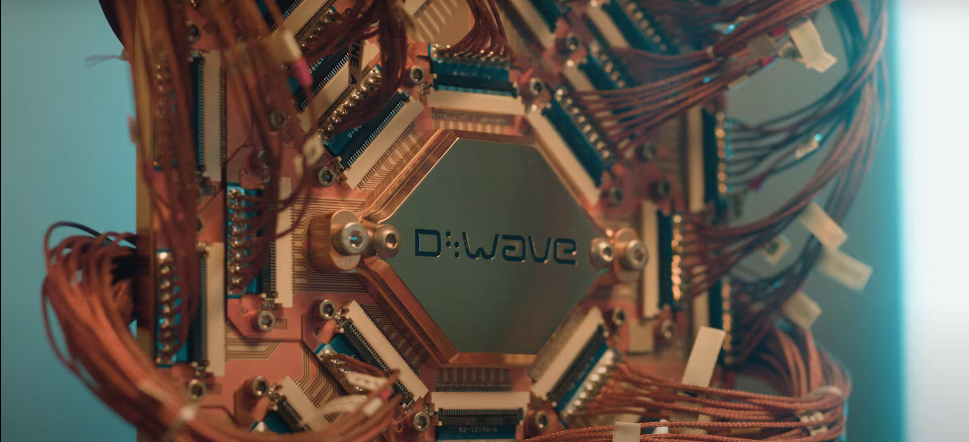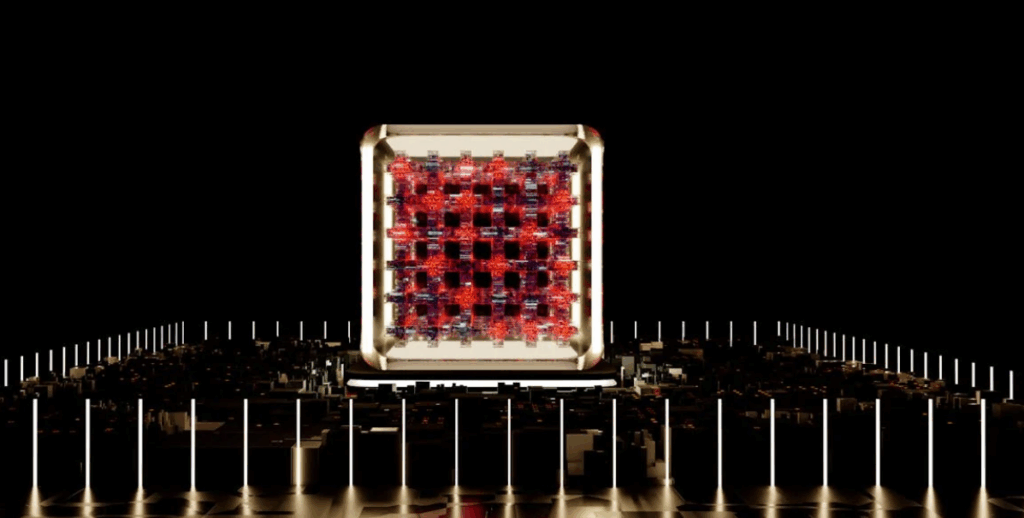Insider Brief
- Amazon Web Services (AWS) has introduced a new quantum computer chip focused on enhancing error correction.
- The company said that the chip, which is fabricated in-house, can suppress bit flip errors by 100x using a passive error correction approach.
- By combining both passive and active error correction approaches, the chip could theoretically achieve quantum error correction six times more efficiently than standard methods.
- Image: Peter Desantis, senior vice president of AWS utility computing products. Credit: AWS
Amazon Web Services (AWS) has introduced a new quantum computer chip focused on enhancing error correction, a pivotal — if not the pivotal — aspect in the evolution of quantum computing. Peter DeSantis, Vice President of Global Infrastructure and Customer Support at AWS, detailed the features and implications of this development in a keynote address in Las Vegas at AWS’s re:Invent conference for the global cloud computing community.
The AWS team has been working on a custom-designed quantum device, a chip totally fabricated in-house, which takes an innovative approach to error correction, according to DeSantis.
“By separating the bit flips from the phase flips, we’ve been able to suppress bit flip errors by 100x using a passive error correction approach. This allows us to focus our active error correction on just those phase flips,” DeSantis stated.

He highlighted that combining both passive and active error correction approaches could theoretically achieve quantum error correction six times more efficiently than standard methods. This development represents an essential step towards creating hardware-efficient and scalable quantum error correction.
In a LinkedIn post, Simone Severini, general manager of quantum technologies at AWS, writes that AWS’s logical qubit is both hardware-efficient and scalable.
He writes that the chip uses a special oscillator-based qubit to suppresses bit flip errors. A much simpler outer error-correcting code protects the phase flip errors.
Severini added, “It is based on a superconducting quantum circuit technology that “prints” qubits on the surface of a silicon microchip, making it highly scalable in the number of physical qubits. This scalability allows one to exponentially suppress the total logical error rate by adding more physical qubits to the chip. Other approaches based on similar oscillator-based qubits rely on large 3D resonant cavities, that need to be manually pieced together.”
Error Correction Progress
DeSantis said that the effort on error correction is important because, despite advancements, qubits remain too noisy for practical use in solving complex problems.
“15 years ago, the state of the art was one error every 10 Quantum operations. Today, we’ve improved to about one error per 1000 Quantum operations. This 100x improvement in 15 years is significant. However, the quantum algorithms that excite us require billions of operations without an error,” DeSantis added.
DeSantis outlined the challenges in current quantum computing, noting that with a 0.1% error rate, each logical qubit requires thousands of physical qubits. He mentioned that quantum computers are not yet where they need to be to tackle big, complex problems. The potential for improvements through error correction represents the surest bet for more practical quantum computing.
“With a further improvement in physical qubit error rate, we can reduce the overhead of error correction significantly,” he said.
Early Stages
Although DeSantis cautioned that the journey to an error-corrected quantum computer is still in its early stages, he emphasized the importance of this development.
“This step taken is an important part of developing the hardware efficient and scalable quantum error correction that we need to solve interesting problems on a quantum computer,” DeSantis said.
DeSantis hopes this development could accelerate the progress towards practical and reliable quantum computing, potentially revolutionizing industries like pharmaceuticals, materials science, and financial services.
If you found this article to be informative, you can explore more current quantum news here, exclusives, interviews, and podcasts.
















